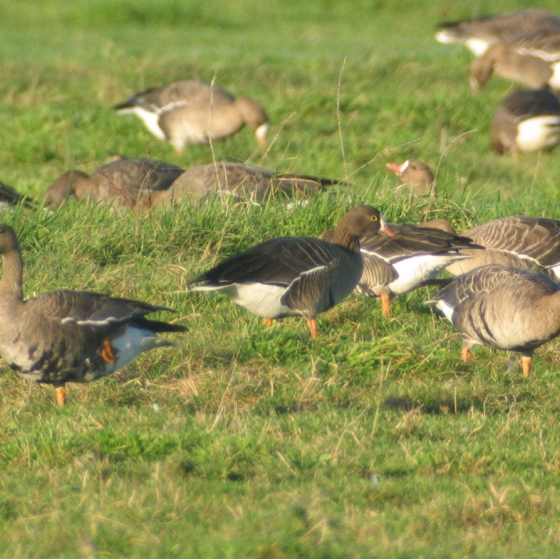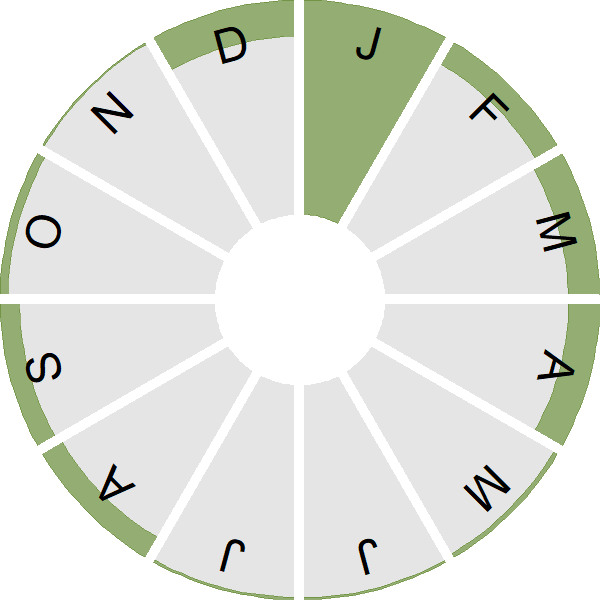Lesser White-fronted Goose

Introduction
A small grey goose with a distinctive yellow eye-ring, this is a rare (and declining) visitor from its arctic breeding grounds. Escapes from waterfowl collections are, however, common.
A sighting of Britain's second Lesser White-fronted Goose on the Severn led the naturalist Sir Peter Scott to set up the Wildfowl Trust (now WWT) at Slimbridge, a move which led to the BBC's Natural History Unit being established in Bristol.
The species breeds from north-east Europe east to Siberia and winters in south-east Europe and south-west Asia.

Key Stats
Status and Trends
Conservation Status
Population Size
Population Change
Population trends of this scarce species are not routinely monitored.
Distribution
Lesser White-fronted Geese are very rare winter vagrants to Britain, a situation confused by the presence of escapes, some showing evidence of hybridisation. Since the 1981–84 Winter Atlas the species has more than doubled its winter range size but it is impossible to be certain about the provenance of all individuals. However, the fact that ten 10-km squares were occupied during the breeding season casts doubt on these records being of vagrants. Most records were from the southern half of England, a pattern shared with many non-native species. A cluster of records in Norfolk may constitute wild birds migrating with Taiga Bean Geese, but known escapes are also present there.
Occupied 10-km squares in UK
or view it on Bird Atlas Mapstore.
or view it on Bird Atlas Mapstore.
European Distribution Map
Distribution Change
Change in occupied 10-km squares in the UK
or view it on Bird Atlas Mapstore.
Seasonality
This species has been too rarely reported to BirdTrack during 2011–22 to properly assess seasonality.
Movement
Britain & Ireland movement
European movements
EuroBirdPortal uses birdwatcher's records, such as those logged in BirdTrack to map the flows of birds as they arrive and depart Europe. See maps for this species here.
The Eurasian-African Migration Atlas shows movements of individual birds ringed or recovered in Europe. See maps for this species here.
Biology
Survival and Longevity
Survival is shown as the proportion of birds surviving from one year to the next and is derived from bird ringing data. It can also be used to estimate how long birds typically live.
Classification, names and codes
Classification and Codes
- Order: Anseriformes
- Family: Anatidae
- Scientific name: Anser erythropus
- Authority: Linnaeus, 1758
- BTO 2-letter code: LC
- BTO 5-letter code: LWFGO
- Euring code number: 1600
Alternate species names
- Catalan: oca riallera petita
- Czech: husa malá
- Danish: Dværggås
- Dutch: Dwerggans
- Estonian: väike-laukhani
- Finnish: kiljuhanhi
- French: Oie naine
- Gaelic: Gèadh-bhlàr-beag
- German: Zwerggans
- Hungarian: kis lilik
- Icelandic: Fjallgæs
- Irish: Mionghé Bhánéadanach
- Italian: Oca lombardella minore
- Latvian: maza zoss
- Lithuanian: mažoji žasis
- Norwegian: Dverggås
- Polish: ges mala
- Portuguese: ganso-pequeno
- Slovak: hus malá
- Slovenian: mala gos
- Spanish: Ánsar chico
- Swedish: fjällgås
- Welsh: Gwydd Dalcenwen Fechan

